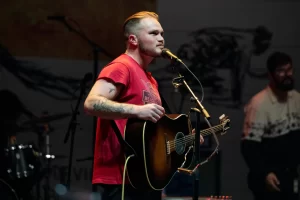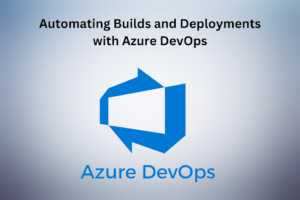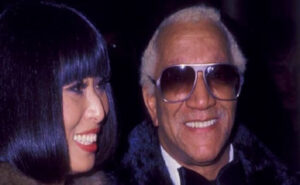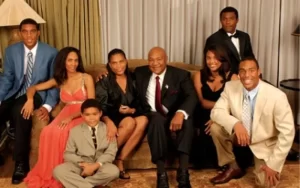
I. Introduction to the Importance of Love Songs in the Music Industry
Love songs hold a unique and enduring place in the music industry, transcending genres and generations. From timeless ballads that tug at the heartstrings to upbeat anthems celebrating romance, these songs resonate deeply with audiences around the world. The universal themes of love, longing, and connection make them a staple in playlists, weddings, and significant life moments, solidifying their status as a vital component of popular music.
The emotional power of love songs not only drives listener engagement but also fosters a strong sense of community among fans. People often share their personal stories and experiences related to these songs, creating a shared narrative that enhances the emotional impact of the music. This connection can lead to increased streams, downloads, and social media shares, making love songs an essential tool for artists looking to build a loyal fanbase.
As the music landscape continues to evolve, understanding the importance of love songs in the industry becomes increasingly vital for artists and marketers alike. With the right strategies, they can harness the emotional impact of these songs to engage audiences, enhance their visibility, and ultimately drive success in a competitive market. In the following sections, we will explore how to effectively connect with audiences, leverage social media, and collaborate with influencers to promote love songs in the most impactful way.
II. Understanding Your Audience
To successfully promote love songs on social media, artists and marketers must first develop a deep understanding of their audience. Love songs resonate with listeners on an emotional level, and knowing who these listeners are can make all the difference in crafting effective promotional strategies.
This section will explore how to identify target demographics, analyze listening habits and preferences, and create audience personas to enhance marketing efforts.
A. Identifying Target Demographics
The first step in understanding your audience is to identify the demographics that are most likely to engage with love songs. This includes age, gender, location, and relationship status. For instance, younger listeners, typically aged 18-24, may gravitate towards contemporary love ballads, while older demographics might prefer classic love songs. Additionally, understanding geographic trends can help tailor content to specific markets. For example, certain regions may have a cultural inclination towards specific genres or lyrical themes.
B. Analyzing Listening Habits and Preferences
Once demographics are established, it’s essential to analyze the listening habits and preferences of the target audience. This can be done through a combination of data analytics and direct engagement. Streaming platforms like Spotify and Apple Music offer insights into what songs are being listened to, how often, and even playlists that feature love songs. Social media analytics can also provide information on how users interact with love song-related content, such as likes, shares, and comments.
By understanding which love songs resonate the most with different segments of the audience, artists can refine their promotional strategies to align with listeners’ preferences.
C. Creating Audience Personas for Effective Marketing
Creating audience personas is a valuable exercise in understanding the heart of your audience. These personas are detailed, semi-fictional representations of the different segments within your target demographic. Each persona should include information such as age, background, interests, values, and typical online behavior.
For example, one persona might be a 22-year-old college student who listens to love songs during study breaks and engages with content on Instagram and TikTok with TikTok promo or even advertisement of this songs on other platforms, while another might be a 35-year-old professional who enjoys classic love songs and primarily uses Facebook. By developing these personas, artists and marketers can tailor their messaging, visuals, and promotions to speak directly to the desires and needs of each segment, thus fostering deeper connections and encouraging engagement.
III. Leveraging Social Media Platforms
In today’s digital age, social media platforms have become invaluable tools for promoting music, particularly love songs that resonate deeply with listeners. Artists and marketers must strategically leverage these platforms to maximize their reach and engagement. Below are key strategies to effectively utilize social media for promoting love songs.
A. Choosing the Right Platforms for Promotion
Not all social media platforms are created equal, and each serves different demographics and purposes. For instance, Instagram and TikTok are highly visual platforms that thrive on short, engaging content, making them ideal for promoting love songs through eye-catching visuals and snippets of performances. On the other hand, Facebook offers a broader demographic reach, allowing for more detailed storytelling and community-building around an artist’s brand.
Artists should assess where their target audience spends the most time and tailor their promotional efforts accordingly. It’s essential to focus on platforms where potential listeners are most active, ensuring that marketing efforts are effective and efficient.
B. Using Visual Content to Enhance Engagement
Visual content is crucial in capturing the attention of social media users. Love songs, with their emotive themes and romantic undertones, lend themselves well to compelling visuals. Artists can create music videos, lyric videos, or even simple behind-the-scenes footage that showcases the song’s creation process.
Additionally, visually appealing graphics featuring quotes or snippets from the song can be shared across platforms to spark interest and encourage shares. Utilizing tools like Canva or Adobe Spark can help artists produce high-quality visuals without needing extensive graphic design skills. The goal is to create content that not only promotes the song but also evokes emotion and connects with the audience on a personal level.
C. Engaging with Followers Through Interactive Content
Engagement is key to building a loyal fan base and enhancing the visibility of a love song. Artists should prioritize creating interactive content that encourages followers to participate. Polls, Q&A sessions, and challenges related to the song can drive engagement and foster a sense of community among listeners.
For instance, artists might ask followers to share their favorite love stories or memories tied to a particular song, or create a dance challenge on TikTok that features their love song. Such interactive initiatives not only promote the music but also create a personal connection between the artist and their audience, making fans feel valued and more likely to share the song within their networks.
By leveraging social media platforms effectively, artists and marketers can create a robust promotional strategy that resonates with audiences and amplifies the reach of love songs. In the next section, we will explore the power of collaboration with influencers and other artists to further enhance marketing efforts.
IV. Collaborating with Influencers and Other Artists
In the ever-evolving landscape of social media, collaboration has emerged as a powerful strategy for promoting love songs. By partnering with influencers and fellow artists, musicians can tap into new audiences, enhance their reach, and create engaging content that resonates with listeners.
This section explores the intricacies of collaboration, offering insights into how artists can effectively leverage these partnerships to boost their promotional efforts.
A. Finding the Right Influencers to Partner With
Identifying the right influencers to collaborate with is crucial. Artists should look for influencers who align with their brand values and have a genuine passion for music, particularly love songs. It’s essential to assess an influencer’s audience demographics, engagement rates, and the type of content they produce. By choosing influencers whose followers overlap with their target audience, artists can ensure that their promotional efforts reach those most likely to appreciate their music. Tools like social media analytics platforms can aid in this evaluation, providing insights into an influencer’s reach and engagement metrics.
B. Creating Collaborative Content for Wider Reach
Once the right influencers are identified, the next step is to create compelling collaborative content. This can take many forms, from co-hosted live performances and behind-the-scenes videos to duet challenges and remix contests. Such content not only showcases the love songs but also brings together the fan bases of both the artist and the influencer, fostering a sense of community and excitement. Additionally, artists can consider creating thematic playlists that include their love songs alongside tracks from the collaborating influencer or other artists, further broadening the exposure.
C. Cross-Promotion Strategies for Mutual Benefit
Cross-promotion is an effective tactic that allows both artists and influencers to benefit from one another’s audiences. When planning a collaboration, it’s essential to establish clear strategies for promoting the content across all social media channels. This includes sharing posts, stories, and videos on platforms like Instagram, TikTok, and Twitter, where both parties can tag each other and encourage their followers to engage. Furthermore, engaging in giveaways or contests can amplify the reach, as followers are often more inclined to participate when incentivized. By fostering a spirit of collaboration, both artists and influencers can create a synergistic effect that elevates their visibility and drives engagement, ultimately leading to greater success for their love songs.
Through thoughtful partnerships with influencers and fellow artists, musicians can effectively navigate the crowded digital landscape, ensuring their love songs not only reach but resonate with a wider audience.
V. Conclusion: Recap and Future Trends in Social Media Promotion for Love Songs
In conclusion, the promotion of love songs on social media is not just about sharing a track; it’s about connecting with audiences on an emotional level. Throughout this article, we’ve explored the significance of love songs in the music industry and how a deep understanding of your audience can drive successful marketing strategies. By identifying target demographics, analyzing listening habits, and creating audience personas, artists and marketers can tailor their promotional efforts to resonate with listeners.
We also discussed the importance of leveraging various social media platforms effectively. Choosing the right platforms, utilizing engaging visual content, and fostering interaction through interactive posts can significantly enhance engagement rates. These strategies help create a community around love songs, transforming casual listeners into dedicated fans.
Looking ahead, the future of social media promotion for love songs appears bright. As technology evolves, we can expect to see innovations such as enhanced AR experiences, AI-driven music recommendations, and more personalized content delivery. Artists and marketers who adapt to these trends will not only stay relevant but will also foster deeper connections with their audiences. Embracing these shifts will be crucial as love songs continue to play an essential role in the soundtrack of our lives, inspiring connections and emotions across generations.
Stay in touch to get more updates & news on Learn Growth!






